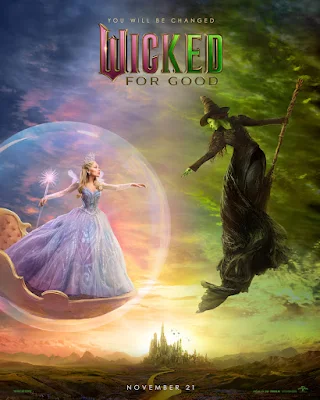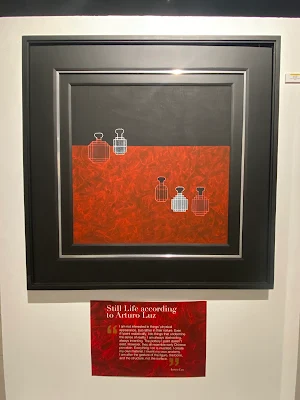“You are what you paint. You paint what you are.”
Renaissance Gallery is excited to showcase the second edition of STREAMLINED: The Art of National Artist Arturo Luz.
Arturo Luz, recognized as a National Artist in 1997, brought a refreshing simplicity to Philippine art, standing out against the more colorful and decorative styles of his time. He focused on clear, clean lines, drawing inspiration from artists like Paul Klee, who famously described a line as “a dot taken for a walk.” Luz also admired the works of Mexican artist Rufino Tamayo, whose simplified human figures had a profound influence on him. In 1952, Luz gained recognition by winning First Prize in an art competition for a piece called "Bagong Taon," which depicted joyful New Year celebrations he had witnessed.
Luz was particularly skilled at capturing the essence of cyclists, musicians, acrobats, and jugglers through disciplined lines. His last few figurative pieces, before he transitioned to pure abstraction, were inspired by Oriental porcelain, where he was more fascinated by the shapes and structure than by the subjects themselves.
In the 1980s, after traveling through Asia and India, Luz returned to figurative art, exploring themes such as “Objects of the Past” and “Cities of the Past.”
He described these works as “imaginary landscapes” drawn from his memories, combining different elements into unique images that weren’t meant to be literal. Beyond painting, Luz expressed his creativity through sculpture, printmaking, and photography, all of which showcased his signature style of elegant simplicity.
Arturo Luz was not only a talented artist but also an effective leader in the art community. From the 1970s to the mid-1980s, he managed his own Luz Gallery while also overseeing the Museum of Philippine Art, the Metropolitan Museum, and the Design Center of the Philippines, demonstrating his remarkable organizational skills.
In short, National Artist Arturo Luz had a profound impact on Philippine art, shaping its future.
You can visit “STREAMLINED II” at the Art Center in SM Megamall until June 16, 2025.
“In my own little world, I know exactly what I want to do. And the greatest satisfaction for me is doing things that become works of art. I can find no equivalent for that. “ –Arturo Luz
Here's a glimpse of his art through the perspective of Mr. Luz himself:
Early works
This is where Klee’s influence comes into play. Some painters find themselves captivated by shapes or colors. In my case, it’s challenging to articulate the attraction. I have always been impressed with anything linear, and Klee’s work happens to be linear. Everything reminds me of my student days. Design is deeply ingrained in me. It has become second nature. I can tell if a certain design “works” or not. I read it instinctively.
Cities of the Past
These architectural paintings, which I call “Cities of the Past,” are imaginary landscapes, recollections of my Asian pilgrimages. They share a common element: they are not literal but rather composite images formed from memory. They are imagined, transformed, and invented. They don’t originate directly from a single source.
The Musicians, Acrobats, and Jugglers
“In Madrid, I also saw carnivals featuring Ferris wheels, which inspired my 'Carnival Wall' series of drawings. These drawings attempt to translate the geometry, motion, tension, shapes, forms, twists, and interlockings that comprise a carnival into linear patterns, encompassing all its planes, framework, and skeleton. They attempt to communicate in graphic terms the color, sound, and gaiety of celebrations.”
“The profusion of fascinating forts, palaces, battlements, mosques, and temples! Enormous! I cannot tell you how impressive it was. The history, architecture, colors, costumes, and faces of the most stunning individuals on the planet captivated me. These women and their children strolled through the streets, and I watched their expressions. I photographed them all. I would position myself in a corner of Jaipur, rotate 360 degrees, and capture images of everything around me, creating a visual spectacle.”
Still Life according to Arturo Luz “I am not interested in things’ physical appearance, but rather in their nature. Even if I paint realistically, I do things that undermine the sense of reality. I am always abstracting, always inventing. The pottery I paint doesn’t exist. However, they all resemble early Chinese porcelain. Everything I do is invented. I created my own material. I invent my own anatomy. I am after the gesture of the figure, the bone, and the structure, not the surface.”
Desert Plants
“The thorn was the last object of aesthetic delectation. Coiled in a tight, bristling ball or unleashed like a shower of barbed wires, the thorns of desert plants are like the dried bramble bush, shorn of its leaves, rolling and tumbling across the desert plains, blown by the arid wind. They are particularly arresting for the tension they evince and convey. You're forgetting that I have the patience of a spider.”
Choosing Burlap
“The burlap works of Italian Alberto Burri and Spaniard [Manolo] Millares sparked my curiosity and interest in this material. I must have bought a great pile of burlap— rolls and rolls of it. I decided to paint the burlap an even color: white, black, grey, brown, and pure ochre. I would tear up the materials, and depending on the grade of burlap, the ripped edges would vary. We gathered a variety of colors and shapes, which were incredibly diverse, before I began working on the composition. I would throw pieces of burlap flat on the ground. Eventually, the pieces will begin to connect, overlap, and take shape. Some of these pieces ran from forty to sixty feet long! Ultimately, I would have made arrangements that worked. Next, another assistant would meticulously stitch all these pieces together using long, curved sack needles. They seamlessly integrate into the overall burlap backdrop. The amazing thing is that there is no visible sewing.”
“Even if the medium changes from painting to sculpture, I still work on the same principles of design. It’s just the material that changes. It’s the three dimensionality that changes from the two dimensionality of a painting. However, essentially, sculpture is driven by the same principles as his painting. As you can see, sculptures are expressive designs that can easily translate into a painting. You know that the pure elegance of simplicity, the discipline, the restraint, the correctness, the detachment of the piece from any emotional entanglement is something that is very Luz, whether in a sculpture or a painting. So, “Whether it’s a painting or a sculpture, I work on the same principle.”





























































.jpg)







